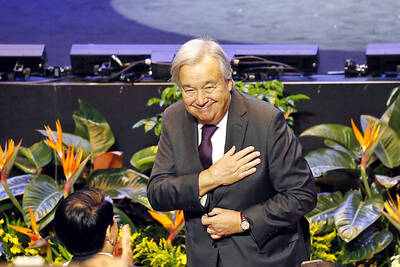Deadly ice that forms suddenly on commuter planes like the one that crashed in New York state is a recognized threat to air passengers, but the US Federal Aviation Administration (FAA) has not adopted recommendations made more than a decade ago intended to prevent ice-related disasters involving such aircraft.
The National Transportation Safety Board (NTSB) identified last year as one of its “most wanted” priorities changes to how US pilots would be instructed to operate anti-icing equipment on planes like Continental Connection Flight 3407, which fell out of the sky late on Thursday near Buffalo, New York, near the Canadian border. The formal safety recommendations trace to similar crashes in 1994 and 1997 in Indiana and Michigan.
“Those of us who have been involved with this process get very frustrated with the inability to get meaningful decisions out of the FAA,” said former NTSB board member John Goglia, a panel member when it investigated the 1994 crash. “They are going to think about it, they are going to put a study group together, they are going to do all these things that always equate to little or no action.”
Officials stopped short of saying ice caused Thursday night’s crash, but they said the crew who perished had noticed significant ice buildup on the wings and windshield just before the plane began pitching and rolling violently.
“Icing is certainly going to be one of the prime suspects because of where it happens and what the conditions were at the time,” said Eric Doten, a former FAA senior adviser and retired chancellor of Embry-Riddle Aeronautical University in Florida.
“This will probably generate more concern about icing,” he said.
Still, fatal icing accidents have been steadily declining since 1982. Before Thursday, the last major icing airliner accident was in 2001.
Slower-moving turboprop planes are more vulnerable to icing problems than larger commercial airliners, which use heat from their engines to prevent ice buildup on wings. Turboprops use pneumatic “boot” deicers that inflate and deflate to break up ice after it forms.
Among four major ice-related recommendations by the NTSB in 1996 was a proposal to instruct pilots to use their pneumatic deicing systems early, instead of waiting for ice to form. Originally, pilots waited to use their pneumatic deicers until they saw ice form on the wings or on another part of the plane such as the windshield.
The FAA has looked into the recommendations, but has not adopted them.
The Canadian government adopted the suggested changes in 1999. The pilot manual for the Dash 8 — the type involved in the crash on Thursday — also recommends turning on anti-icing equipment immediately, said the Transportation Safety Board of Canada, which investigated a May 2005 flight in which a Dash 8 plane suddenly plunged 1,280m before its pilot regained control after 40 terrifying seconds.
“The [safety] board has been extremely concerned about the loss of control that can occur in icing conditions,” former NTSB chairman Jim Hall said. “Unfortunately, it is again a case of the FAA failing to follow through on the NTSB recommendations in a timely fashion.”

DOUBLE-MURDER CASE: The officer told the dispatcher he would check the locations of the callers, but instead headed to a pizzeria, remaining there for about an hour A New Jersey officer has been charged with misconduct after prosecutors said he did not quickly respond to and properly investigate reports of a shooting that turned out to be a double murder, instead allegedly stopping at an ATM and pizzeria. Franklin Township Police Sergeant Kevin Bollaro was the on-duty officer on the evening of Aug. 1, when police received 911 calls reporting gunshots and screaming in Pittstown, about 96km from Manhattan in central New Jersey, Hunterdon County Prosecutor Renee Robeson’s office said. However, rather than responding immediately, prosecutors said GPS data and surveillance video showed Bollaro drove about 3km

Tens of thousands of people on Saturday took to the streets of Spain’s eastern city of Valencia to mark the first anniversary of floods that killed 229 people and to denounce the handling of the disaster. Demonstrators, many carrying photos of the victims, called on regional government head Carlos Mazon to resign over what they said was the slow response to one of Europe’s deadliest natural disasters in decades. “People are still really angry,” said Rosa Cerros, a 42-year-old government worker who took part with her husband and two young daughters. “Why weren’t people evacuated? Its incomprehensible,” she said. Mazon’s

‘MOTHER’ OF THAILAND: In her glamorous heyday in the 1960s, former Thai queen Sirikit mingled with US presidents and superstars such as Elvis Presley The year-long funeral ceremony of former Thai queen Sirikit started yesterday, with grieving royalists set to salute the procession bringing her body to lie in state at Bangkok’s Grand Palace. Members of the royal family are venerated in Thailand, treated by many as semi-divine figures, and lavished with glowing media coverage and gold-adorned portraits hanging in public spaces and private homes nationwide. Sirikit, the mother of Thai King Vajiralongkorn and widow of the nation’s longest-reigning monarch, died late on Friday at the age of 93. Black-and-white tributes to the royal matriarch are being beamed onto towering digital advertizing billboards, on

POWER ABUSE WORRY: Some people warned that the broad language of the treaty could lead to overreach by authorities and enable the repression of government critics Countries signed their first UN treaty targeting cybercrime in Hanoi yesterday, despite opposition from an unlikely band of tech companies and rights groups warning of expanded state surveillance. The new global legal framework aims to bolster international cooperation to fight digital crimes, from child pornography to transnational cyberscams and money laundering. More than 60 countries signed the declaration, which means it would go into force once ratified by those states. UN Secretary-General Antonio Guterres described the signing as an “important milestone,” and that it was “only the beginning.” “Every day, sophisticated scams destroy families, steal migrants and drain billions of dollars from our economy...